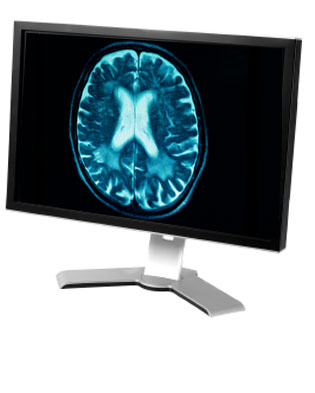Integrative Neuromonitoring and Critical Care Informatics Group - Research
The overarching objectives of the Integrative Neuromonitoring and Critical Care Informatics Group are to improve diagnoses and accelerate treatment decisions for the critically ill and to understand the physiology of the injured brain.To achieve these objectives, we leverage critical care data and mathematical models derived from physiology, along with signal processing and estimation methods, to extract relevant information from clinical data. The models provide the constraints that allow readily observable data streams (such as waveforms of ECG, arterial blood pressure, cerebral blood flow velocity, and/or near-infrared transmission through cerebral tissue) to be related to physiological variables and parameters that are unmeasured but more directly reflective of changes in pathological state (quantities such as cardiac output, cardiac contractility and ejection fraction, peripheral resistance, intracranial pressure, and/or cerebral metabolism). The models thereby form the basis for estimation of unmeasured quantities from measured ones, thus enabling a fuller assessment and tracking of patient state, and a more comprehensive description of the underlying physiology. Where no such models can be identified, we rely on machine-learning approaches to guide our exploration of the data. Currently, our main research efforts are aligned along main projects.
- Noninvasive Continuous Estimation of Intracranial Pressure
Brain tissue is highly vulnerable to unbalanced oxygen demand and supply. A few seconds of oxygen deficit may trigger neurological symptoms, and sustained oxygen deprivation over a few minutes may result in severe and often irreversible brain damage. The rapid dynamics coupled to the potential for severe injury necessitate continuous, and ideally noninvasive, cerebrovascular monitoring in the populations at greatest risk for developing or exacerbating brain injury. One of the key variables to monitor in patients with brain injury is intracranial pressure (ICP), which determines the pressure on brain tissue and also affects cerebral perfusion. Current measurement modalities for ICP require the penetration of the skull and the placement of a pressure-sensitive probe in the brain parenchyma or cerebral fluid spaces. With colleagues from neurosurgery, vascular neurology, internal and critical care medicine (Beth Israel Deaconess Medical Center, Boston, Boston Children’s Hospital, Boston Medical Center), we are developing and validating non-invasive methods to assess ICP continuously and robustly in a patient-specific and calibration-free manner. - Brain Injury in the Preterm Neonate
Advances in neonatal critical care over the past several decades have contributed to a dramatic decline in mortality of prematurely born infants. However, survivors of prematurity are at great risk of developing brain injury, which often results in lifelong disability. The greatest advances in survival have been achieved in the smallest and sickest of babies, who also form the group at greatest risk for devastating brain injury. Working with colleagues from Children’s Hospital Boston, Beth Israel Deaconess Medical Center, and Children’s National Medical Center in Washington, DC, our group is interested in a wide range of fundamental physiological and biomedical questions relating to the care of prematurely born infants. We are particularly interested in identifying physiological antecedents of neonatal brain injury. - Early Sepsis Detection in the Emergency Department
Sepsis is a major national and international health concern. While it is estimated that a staggering 1 out of every 2 to 3 hospital deaths is due to sepsis, no effective early warning system currently exists to alert care providers of the potential presence of sepsis. Traditionally, much research has focused on therapeutic options once sepsis turns into septic shock. However, three recent large randomized controlled clinical trials have shown that mortality is upward of 20% in septic shock patients irrespective of the particular treatment provided. Furthermore, mortality in septic shock patients increases for every hour of delay in initiation of appropriate therapy. We are working closely with colleagues at the Department of Emergency Medicine at Massachusetts General Hospital to develop approaches for early detection of patients at risk of sepsis or septic shock at the first point of patient contact.


